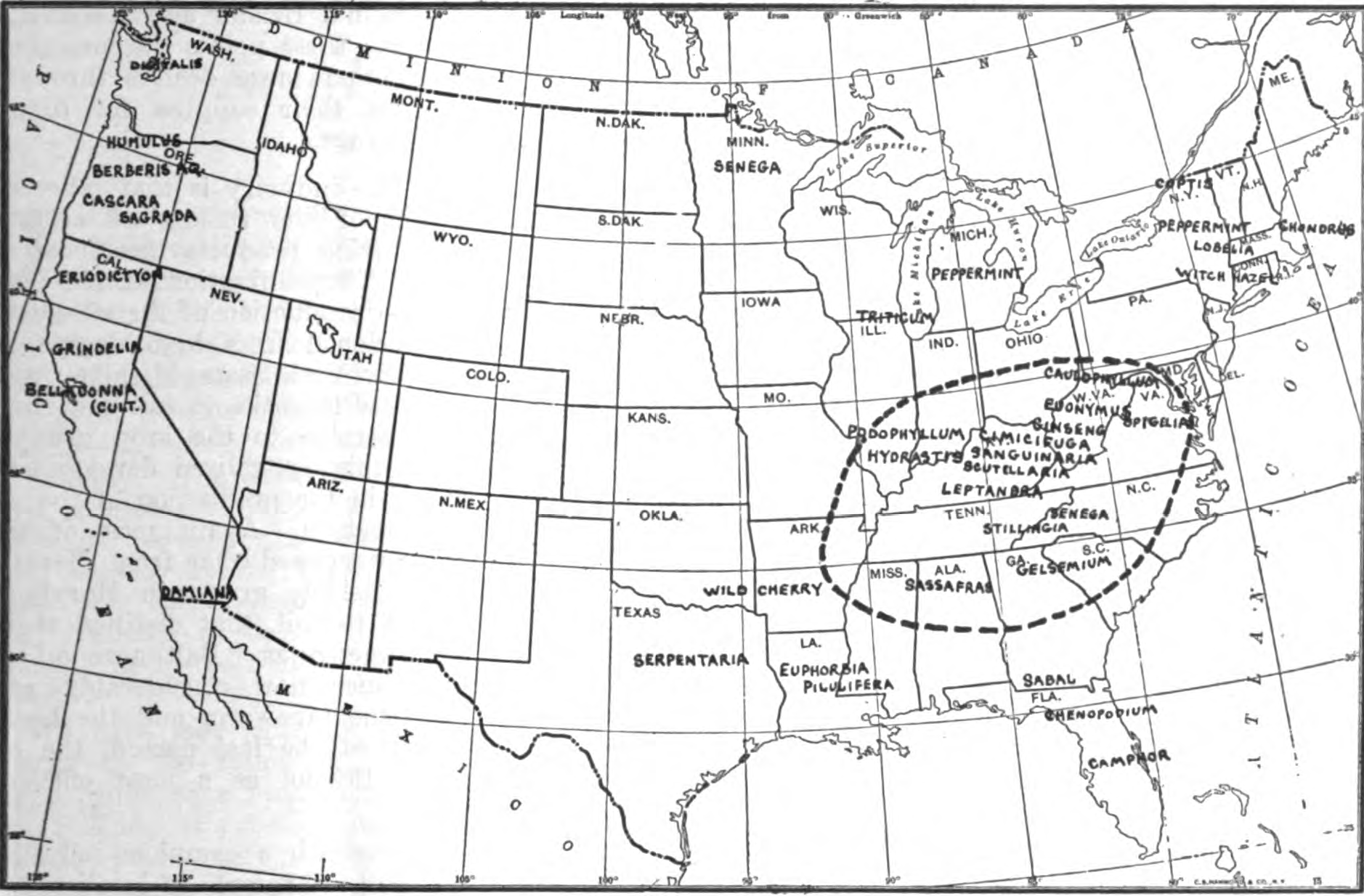More than a century before the likes of Purdue Pharma began flooding Appalachian communities with opioids and destroying lives, giant pharmaceutical companies had a very different relationship to the mountain region.
Indeed, years of research into business records and country store ledgers has revealed that Appalachian root diggers and herb gatherers played a role in launching the modern pharmaceutical industry. My new book, “Ginseng Diggers: A History of Root and Herb Gathering in Appalachia,” uncovers the often-hidden dynamics of this relationship, and its impacts on both mountain communities and the industry as a whole.
This story begins in 1848 when a Wilkesboro, North Carolina, merchant named Calvin J. Cowles opened a store at the foot of the Blue Ridge escarpment and launched a new type of industry in the mountain South. Aware that budding drug manufacturers nationwide were demanding so-called “crude botanicals” — that is, raw, unprocessed medicinal plants — Cowles created a supply chain that extended deep into the forests of the Blue Ridge. He distributed flyers to country stores in Ashe, Watauga, Yancey, Caldwell and Wilkes Counties that listed some two-dozen plants and the prices he was willing to pay for them.
Rural communities responded. They brought in ginseng, mayapple, bloodroot, wild ginger, lobelia and many more medicinal plants. Once or twice a season, local storekeepers bagged them up and brought them down the mountain to barter with Cowles. Cowles exchanged these roots and herbs for goods he procured from northern commission merchants, and the storekeepers hauled their goods back up the mountain to start the bartering cycle again.

Cowles, meanwhile, shipped his crude botanicals to some of the pioneers in drug manufacturing, including the Shaker Communities in New York and Massachusetts, Tilden & Co. of New Lebanon, New York, William S. Merrell of Cincinnati and B. Keith & Co of New York City, among others. At this point, the pharmaceutical industry was in its infancy. Therapeutics in the United States had long been dominated by European-trained physicians dedicated to humoral theory and the practices of purging, bloodletting and mercury treatment. What plants that were used in medical therapy were imported from Europe and compounded into medicines by physicians themselves.
However, in the middle of the 19th century – with a financial boost by the Civil War – small-time manufacturers evolved into large corporations such as Parke, Davis, and Co., and Ely Lilly. Moreover, an emerging “botanico-medical” movement, led by a group of physicians who called themselves Eclectics, began pushing these drug-makers to use more plants — and, specifically, indigenous American plants — in their tinctures, extracts, teas, salves and balms for distribution to stores and physicians. A large market opened for a steady supply of crude botanicals, and Appalachian entrepreneurs like Cowles stepped in to supply it.
The Statesville, North Carolina-based Wallace Brothers brought the trade to new heights in the 1880s. Widely considered the largest wholesale crude botanical supplier in the United States, if not the world, the Wallace Brothers extended the trade deeper into the mountains.
Mordecai Hyams, the manager of the Wallace Brothers herbarium, a collection of preserved plants used for study, estimated that his stocks came from 40,000 people in western North Carolina, who harvested more than 200 different species of plants and brought them to around 400 country stores in 30 counties.
Upon his botanizing tour of western North Carolina in 1879, the famous Harvard botanist Asa Gray was shocked to discover the “magnitude of the business” carried on in the region. “Almost every day,” he reported, “we would meet women on horseback with a bundle of the more bulky herbs.”
Near the height of their influence, the Wallaces bought and sold more than a million pounds annually to some of the largest pharmaceutical companies and patent medicine makers in the United States and the world, raking in $100,000-300,000 ($2.2 to 7.5 million today) annually. While they were the largest, they were far from the only supplier in the region.

As the Wallace Brothers’ control over the regional market waned at the turn of the century, dozens of other entrepreneurs from the northwestern North Carolina mountains – such as George and R. T. Greer, Grant Wilcox, J. Q. McGuire and eventually S.B. Penick – opened their own firms and expanded their operations into eastern Kentucky, western Virginia and West Virginia. Wagons loaded with roots and herbs lined up at rural collection points, as harvesters waited to unload their haul into cotton baling machines. A traveler passing through might mistake the bales of roots and herbs piled high around these warehouses for cotton. By 1920, at least one observer estimated that 75 percent of the world’s supply of native North American medicinal plants came from southern Appalachia.
Why did southern Appalachia become so central to medicinal plant harvesting in the United States? The reason, it seems, is a combination of ecology, culture and economic conditions.
First, the southern Appalachian region was, and is, one of the most florally diverse temperate forests in the world. Due to the existence of a wide variety of microhabitats and the fact that the region escaped glaciation during the last Ice Age, Appalachia contains thousands of different species of plants. In half a day’s rambling, a keen harvester could find dozens of different marketable plants.
Second, many people desperately needed income in the lean post-Civil War years. The livestock industry shattered, crop prices falling and farms abandoned, mountain communities readily turned to digging ginseng and any other roots on the price lists posted at the local store to purchase anything from coffee and sugar to clothes, plow points and fishhooks. Some used roots and herbs to buy flour, corn, and bacon. Some used them to pay taxes or buy school books. Indeed, roots and herbs helped grease the economic wheels in a region that struggled for traction.

Perhaps the most important reason why Appalachia became central to the botanical drug trade was due to the commons culture of the inhabitants. The custom of treating unimproved land as a de facto commons ensured that all members of a community had access to the forested mountainsides to hunt, fish and forage. It served as something of a social safety net, providing access to resources when times were hard.
As one resident of northwestern North Carolina remembered of the commons: “Back when I was little, you used to go anywhere and get [roots], and nobody would say nothing to you. That was the way of life, you know. If I found something on your land, I could get it. Or if they found it on ours, they could get it. You didn’t have these ‘no trespassing’ signs…The tops of the mountains were just for everybody.”
This access to the landscape was necessary for individuals who may not have owned hundreds of acres of forests to find the wide variety of plants demanded. It also provided a flexibility in the supply chain that allowed root dealers to take chances on plants that showed medical promise but were not yet raised intensively in gardens.
In some ways, the same general factors that contributed to the decline of the botanical drug trade paved the way for the opioid crisis. After World War II, medical science and the pharmaceutical industry moved almost entirely away from botanical pharmacy. Medical schools stopped teaching medical botany, and new synthetic drugs, including opioids such as oxycodone and Vicodin, dominated production.
Mountain communities themselves increasingly turned away from plant-based therapy in favor of modern pharmaceuticals. Moreover, the decline of certain plant species, such as ginseng, and the fragmentation of the de facto commons further reduced the role that root digging once played in mountain communities.
Although root digging and herb gathering would continue — and, indeed, it continues to this day — it would not feature the same level of involvement nor generate the same level of income as it did from 1870-1940.
This story punctures the popular but inaccurate belief that Appalachia was a regional backwater isolated from the main economic and social currents sweeping the nation in the 19th century. As we have seen, Appalachian root diggers were part of one of the most significant growth industries of modern America. This relationship once provided them a means for economic independence and stability. Recently, however, it has brought them tragedy and uncertainty.
Luke Manget is an assistant professor of History at Dalton State College, located in Dalton, Georgia. His upcoming book “Ginseng Diggers: A History of Root and Herb Gathering in Appalachia” will be released on March 22, 2022.



